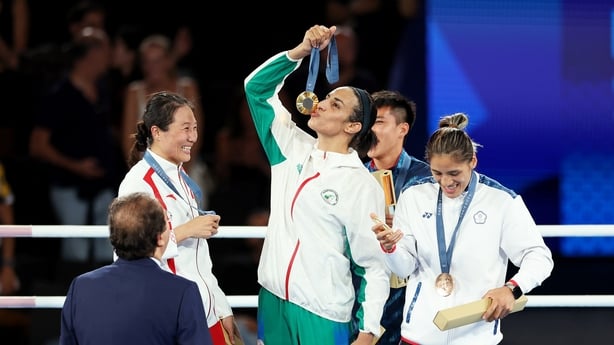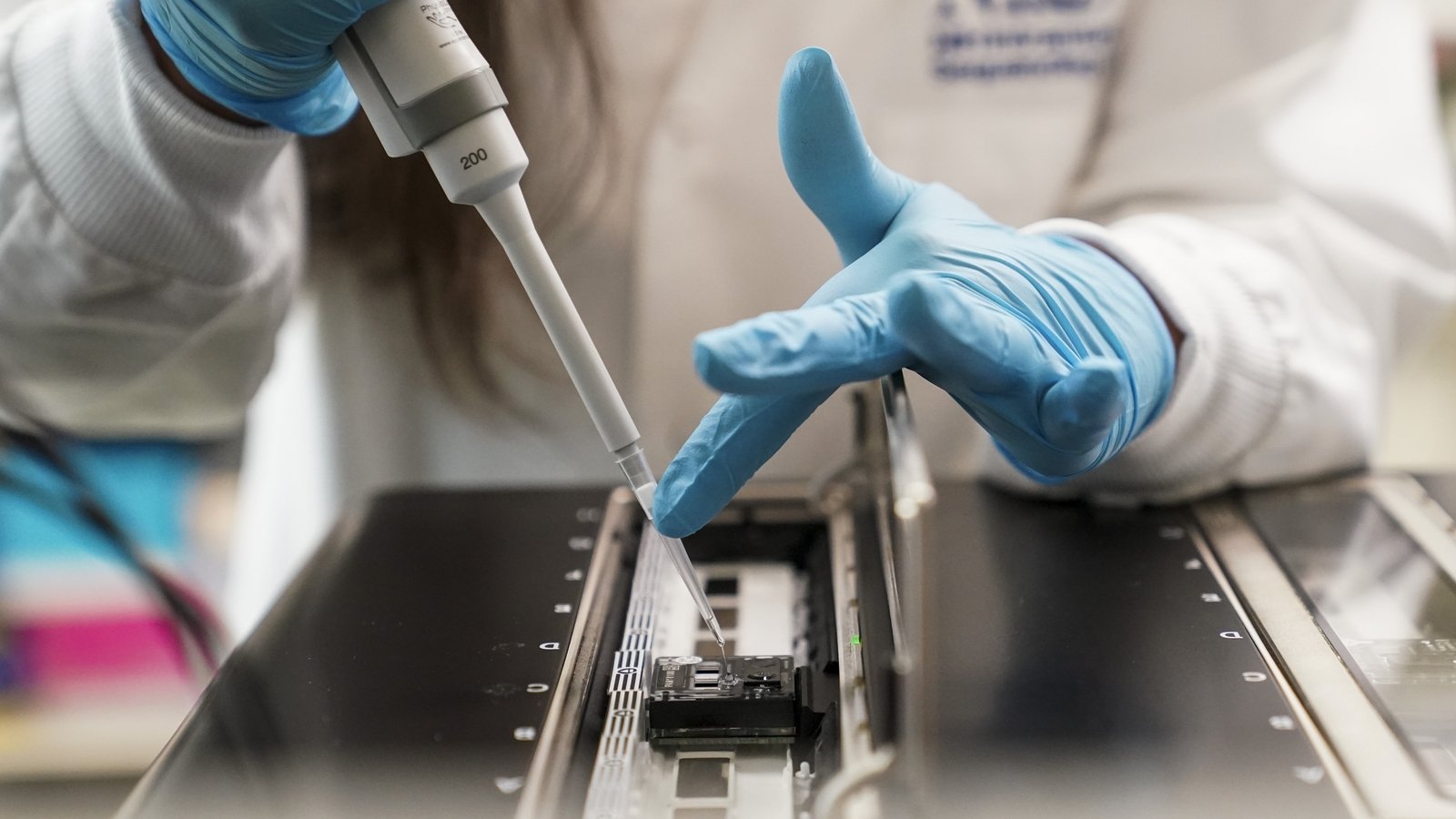On 30 July, World Athletics introduced sweeping new regulations requiring any athlete competing in a female category at September’s World Championships to undergo testing for the SRY gene.
The SRY gene, found on the Y chromosome, is responsible for the development of testes in the body. National federations will collect a buccal swab or blood test from competing athletes to test for the gene.
Those without the gene will be deemed “biologically female” and allowed to compete, while those with the gene deemed “biologically male” and barred from competing in the female category until further examination.
World Athletics President Seb Coe said the test will protect integrity and quell fears over a “biological glass ceiling” in the female category.
The test is athletics’ latest attempt to find an equitable solution to one of the sport’s most hotly contested and controversial issues – transgender and DSD eligibility.
The term ‘DSD (Differences in sex development), used interchangeably with ‘intersex’, refers to individuals born with rare congenital conditions. Some can be born with external female genitalia but functioning testes, and are often certified as female at birth and raised as such.
A transgender female refers to an individual who was born a male but whose gender identity is female.
World Athletics believes both have an unfair competitive advantage over biological females due to heightened testosterone exposure.
Previous regulations required DSD athletes to suppress testosterone levels below 2.5 nanomoles/litre for a minimum of 24 months. Transgender women who had undergone puberty as males were banned from female competition.
Calls to further tighten regulation erupted following the Paris Olympics and controversy over two allegedly intersex boxers, Imane Khelif and Lin Yu-ting.

Imane Khelif’s eligibility became a huge talking point during the Paris Games
The UN special rapporteur on violence against women and girls urged sporting bodies to adopt sex screening to protect the female category. A group of high-profile academics called on the International Olympic Committee (IOC) to enforce tougher regulations in an editorial for the Scandinavian Journal of Medicine & Science in Sports.
Christopher Kirk, a senior lecturer of Sport and Exercise Physiology at Sheffield Hallam University, was one of those names. He told RTÉ Sport he believes SRY gene screening will “provide a starting point for fair competition”, and pre-competition testing will help prevent “the media circus” that engulfed the Olympics.
Others criticise World Athletics for combining DSD and transgender athletes under one umbrella policy.
“The merging of these two things is wrong scientifically, but also just the wrong way to view very different types of people,” Alun Williams, a professor of sport and exercise genomics at Manchester Metropolitan University, told RTÉ Sport.
Williams stood as an expert witness at the Court of Arbitration for Sport (CAS) in 2019, when intersex athlete Caster Semenya challenged World Athletics (formerly known as the IAAF) over its existing DSD policy.
Through Semenya’s athletic dominance and the historic rulings that attempted to shackle it, conversations of intersex eligibility were propelled into the mainstream.
But before Semenya went on to capture two Olympic titles, athletics had conducted controversial sex testing policies for over 70 years.
In 1936, the IAAF first introduced rules to examine ‘suspicious’ athletes whose sex was called into question by competitors. By 1948, female athletes were required to carry medical certificates confirming their sex.
A brief year from 1966-67 saw the infamous ‘nude parades’, with women in IAAF competition subjected to visual inspections. Cold War-era suspicions that countries were using male athletes disguised as females to gain competitive advantages had become rampant.
The ‘Barr body’ test was introduced in 1967 as a scientific, non-invasive method to determine sex.
Athletes would take a quick buccal swab to confirm or deny the presence of XX chromosomes. Barr testing spanned decades, but became tainted by high-profile controversies.
Maria José Martínez Patiño, a Spanish hurdler, was barred from competition in 1986 after failing a Barr test. Later examinations confirmed Patiño had XY chromosomes, but also CAIS (Complete androgen insensitivity syndrome), meaning her body never adapted or gained benefits from the increased testosterone created by her internal testes.
Though Patiño was reinstated in 1988, pressures from the scientific community saw Barr testing disbanded four years later. World Athletics’ newest regulations allow DSD athletes with CAIS to compete in the female category.
Until Semenya captured her first world title in Berlin in 2009, there had been no blanket sex testing policy in athletics for 17 years. Semenya’s victory sparked a flurry of conspiracies regarding the “masculinity” of her appearance, with the IAAF sex testing her soon after.
A deal was struck that required Semenya to keep testosterone levels below 10 nmol/L to compete.
Testosterone became the new way to tackle DSD athletes’ perceived performance advantage, with the bar eventually lowered to 2.5 nmol/L in 2023.
The World Medical Association criticised the policy, labelling the suppression of naturally occurring testosterone for sporting purposes as unethical.
In Semenya’s 2019 case against the IAAF, CAS sided with the governing body, concluding testosterone limits were “discriminatory but necessary”.
While Semenya walked away from competition, Christine Mboama, the 200m silver medallist in the Tokyo Olympics, medicated her testosterone levels to compete.
Research shows testosterone to be a key performance differentiator between men and women. Higher levels contribute to increased muscle mass, strength and haemoglobin circulation – factors that contribute to the differences in sporting performance between sexes (10-12% on average).
Women typically produce testosterone in the range of 0.1-1.8 nmol/L, while men range from 7.7-29.4 nmol/ L. DSD athletes, with male testes, can often produce testosterone levels similar to those of a non-DSD male.
Transgender women, who have gone through male puberty, are shown to hold a palpable advantage over biological women even after androgen-suppressing medication.
For DSD athletes, a concrete performance advantage is harder to prove. Due to variability in conditions and small population make-up (roughly .018% of the world population), no independent research has shown DSD athletes to hold a clear advantage over biological women.
“I’ve never said that none of these [DSD] athletes have any advantage from that higher testosterone… I think it’s unlikely that they have the full ‘male’ advantage,” says Williams.
“It’s almost impossible to determine then on an individual level, whether they have 50% of that, or 2% of that, or 98% of that.”

Caster Semenya’s case had shaped recent policies on DSD athletes
Kirk argues that the only relevant DSD concerning sex testing is 5-ARD (5-alpha-reductase deficiency), the condition Semenya is known to have.
5-ARD athletes, who are sensitive to androgens, “have many of the athletic advantages that males have over females in sport, despite outwardly presenting as female and many of them living as the woman gender,” says Kirk.
“Their sporting advantages would not be as great as non-46XY (5ARD) DSD males, but their performance would still be far above those of females.
“The other categories of DSD will not be affected by these regulations. The people affected by these other DSD conditions are highly unlikely to be naturally selected into sport as they are unlikely to have the physiological requirements to be better than their peers at any age group or standards.”
Even if the SRY gene tests help balance the playing field, ethical concerns linger.
Madeliene Pape, a former Australian Olympian who is now a sociologist at the University of Lausanne, competed against Semenya at the 2009 World Championships. She describes the logistics of the SRY gene test as “completely black boxed”.
Pape raises concerns about the test publicly outing athletes, many of whom may never have known they had a DSD.
“World Athletics is perfectly aware that they cannot protect the privacy of athletes,” she says.
Pape worries about the inevitability of minors being tested, and points toward countries like Norway that prohibit genetic sex testing for the purpose of sport
“In the event that an athlete is chosen for a national team… and then that athlete just suddenly disappears and can no longer compete at the championships, well, people do start to ask questions. The media will start to ask questions.
“In some countries, we could expect there to be threats of physical violence and certainly ostracisation for athletes who ‘fail’ one of these tests.”
She worries about the inevitability of minors being tested, and points toward countries like Norway that prohibit genetic sex testing for the purpose of sport.
Other sporting bodies appear to be moving in a similar direction. In May, World Boxing introduced similar SRY gene testing for adults competing at sanctioned events.
World Aquatics has reserved the right to a chromosomal sex screen in its anti-doping policy since 2023.
Speaking to RTÉ, spokesperson James Pearce said he was unaware of World Aquatics ever enforcing this clause, and contends eligibility of DSD athletes haven’t been an issue in swimming.
The IOC policy was heavily criticised in some quarters over a perceived failure to lead on the issue in Paris. Their current inclusivity framework holds “no presumption of advantage” for transgender women competing in the female category.
New president Kirsty Coventry has vowed to protect the women’s category and created a task force to draft new legislation.
Last week, Donald Trump promised a “very strong” form of sex testing at the LA Olympics.
World Athletics’ new rules may provide a useful template. Or, as history has shown, it may prove another failed attempt to answer sports’ most complex question.
Follow the RTÉ Sport WhatsApp channel for the best news, interviews, analysis and features, as well as details of our sports coverage across all RTÉ platforms.
